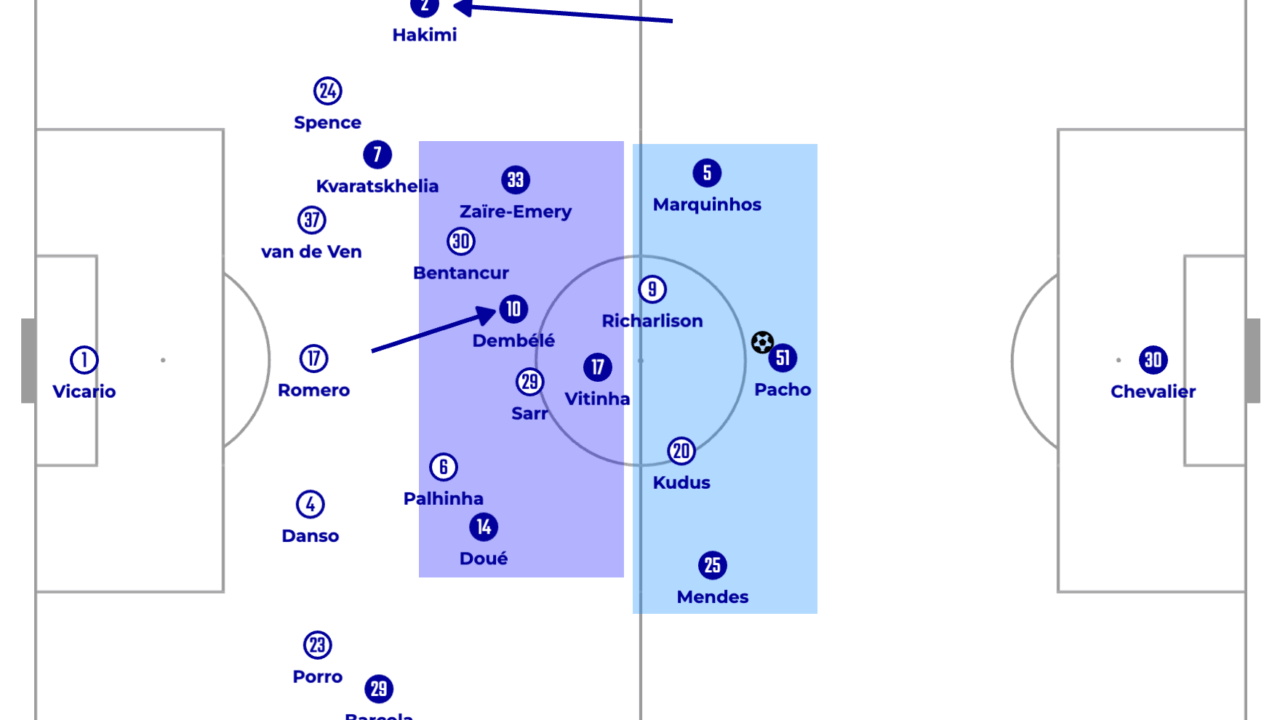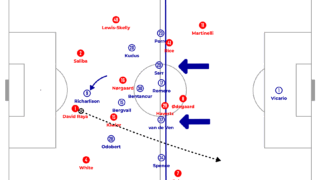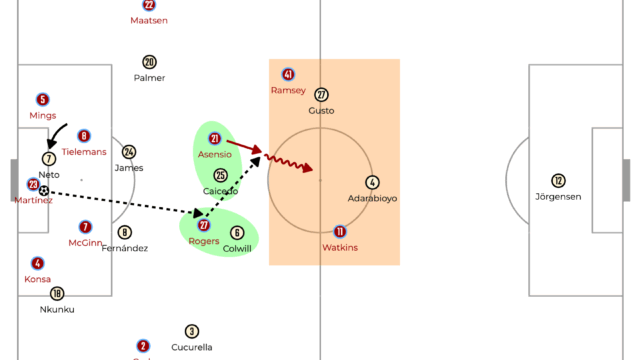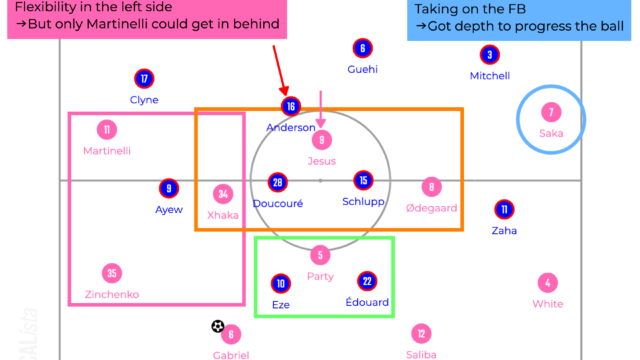25-26 UEFA Super Cup Paris Saint-Germain 2-2 (4-3 on penalties) Tottenham Hotspur [Match Analysis]

Introduction
Tottenham Hotspur under their new manager Thomas Frank took on the Champions League winner and kept holding their lead until 93 minutes, even though they lost on penalties. The main topic would be their back five approach because they played with a back four in their preseason games. The reason behind this will be analysed later in this article, but this literally reminded us of Brentford, which was Thomas Frank’s former club. That Brentford team had won several times against some big clubs like Man City, Arsenal or Liverpool, so Thomas would have thought that they could reproduce this against the Champions League winner, and it was so close.
Line up
Here’s the line up in the match.

Tottenham played with the back five, three midfielders and front two. The midfield three matched up against PSG’s midfielders, following the marker everywhere.
PSG hadn’t changed a lot from last season, but Doué was in the midfield and Chevalier was in goal instead of Donnarumma who is reported to move to Man City (or anywhere else maybe).
Aggressive Start from Tottenham
Thomas Frank decided to go man to man against PSG’s restarts from the back. They had pressed high with man to man approach throughout the preseason, but with the back four. As it was discussed in the article below, which analysed their preseason games, their high pressing contained inevitable risks that if the opposition could beat it, it was likely to be immediate threats against Tottenham.

Of course, if they could do well, it generated goal scoring opportunities, but with the back four, the risk was higher because the back four needed to shuffle across to match up the opposition front three by covering longer distances. So, Frank deployed the three centre backs against PSG’s front three to match up without adjusting the positions by shifting across.

Not only the centre backs, the midfield three also marked tightly PSG’s midfield three as their flexibility is their biggest strength. Especially, Sarr tracked Vitinha everywhere, who is the vital player in their build up play, in order to prevent PSG from finding spare players in the midfield.
This brave approach caused problems for PSG, which was similar to what they faced against Chelsea in the Club World Cup final, showing us that Spurs might have done something unexpected against the best team in Europe.
This disrupted PSG’s tempo, but it is impossible to go man to man every time and it was only limited to the situation when Spurs could set up their shape like when goal kicks. So, other than that, PSG sometimes found a spare player at the back to progress.

It was mainly Hakimi, the right fullback. As the right winger Kvaratskhelia often kept the width to pin the left wingback Spence to stop him stepping forwards to press on Hakimi. This was the first step for PSG to successfully progress into the midfield.
The next one was Dembele dropping off to create a numerical advantage in the midfield, which was his trademark movement during PSG’s success last season.

Dembele’s presence in the midfield gave PSG an extra option to play through while the back three also created an advantage against Tottenham’s front two. As Hakimi went higher, the left fullback Mendes stayed deeper to keep the balance at the back. These positional superiorities let PSG possess the ball in the midfield and progress into the final third, but it was difficult for them to break down the stubborn defensive structure of Tottenham which was similar to Brentford last season.
Conceal the Weakness from the Preseason

The illustration shows an example, it is in the second half though. In the preseason games, Tottenham showed extremely organised zonal defending around the box, but the weakness was the gap between the ball side fullback and centre back. Even though the fullback applied pressure on the ball, the centre back stayed within the width of the goal area to protect the most dangerous area. However, this opened up the gap between them and the oppositions often exploited this area.
In this game, however, thanks to the extra centre back at the defensive line, there was always an additional defender to cover the gap. This effectively closed any possible routes towards the goal, making it hard for PSG to penetrate.
PSG Regained Their Form
As the game progressed, PSG found a way to beat the man to man pressing. They could create time to circulate the ball and found the moment when Tottenham’s centre backs were delayed to close PSG’s attackers down.

In this example, Romero failed to press on Dembele on time, which gave him time to play in behind and Barcola exploited the space behind Danso. As there were no covers due to man to man pressing, these little delays had a huge impact.
Set Pieces & Something Inevitable
It was set pieces which gave Tottenham the lead against PSG. Nothing more than that, but thanks to the back three system, they had one more attacker in the box from set pieces, which might have given them an extra advantage. It was something Thomas Frank was good at when he managed Brentford to beat Man City, Liverpool or Arsenal.
However, giving up possession is not the best way to finish the game with keeping the lead. Something can happen when the ball is delivered into the box again and again, and unfortunately for them, or finally for PSG, the lead disappeared and PSG won it on penalties.
The game shows how well Tottenham may do this season and how good Thomas Frank is as manager to install his strategy with just a few games at the beginning of his new era.


